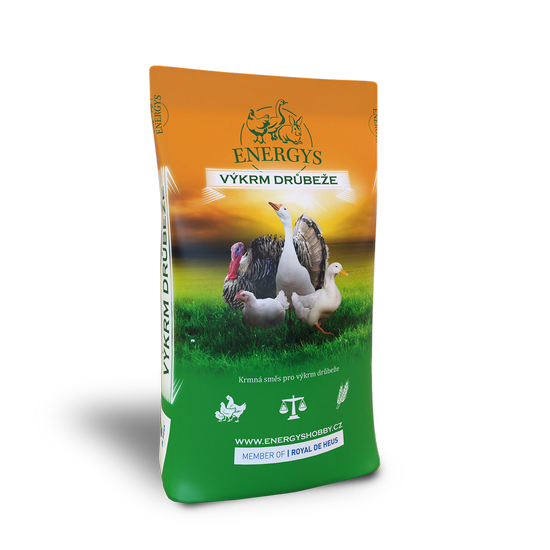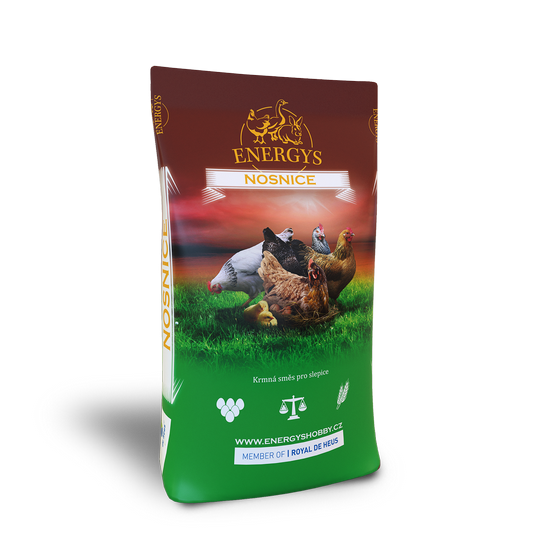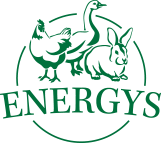Rabbits
Poultry
Laying hens
Quails
Guinea pigs
Pigs
Ostriches
Sheep and goats
Pigeons
Pheasants
Forest animals
High summer temperatures in poultry breeding
High ambient temperatures raising significantly above 30°C or a lack of shady places for hiding away from direct sunlight are common problems for egg laying chickens in smaller farming operations. The body temperature of poultry is generally around 41 degrees and egg laying chickens tolerate summer temperatures well in shade with ample access of fresh air. However, what can be done to provide these conditions?
Successful breeding is conditional on:
- Airy housing and full shade for the chicken coop.
- Shady places in the paddock for the chickens to hide – trees or other vegetation
- Fresh drinking water replaced regularly 2 to 3 times a day.
- Lighter fodder without excessive fats. If moist fodder is given to the poultry, it should be eaten within a short time (loose mixtures are ideal) to prevent the fodder from fermenting.
- Suitable substrate for dust bathing.
Light egg laying poultry (araucanas, brown leghorns, leghorns or hybrid breeds and breeds on the same base) is the least sensitive to high summer temperatures. Heavier and meat-producing fattened poultry has greater difficulties tolerating high temperatures. If global warming is to continue, we may have to switch to breeding guineafowls.
Related posts
7. October 2025
The chicken mite is a dangerous parasite that causes stress, anemia, and reduces egg production in laying hens. Chemical products are losing their effectiveness and are subject to legislative restrictions. Herbal extracts are a possible natural alternative that repels mites and promotes poultry health.
8. April 2025
Breeders raising hens for egg production naturally want them to produce as many eggs as possible while keeping costs low. For this purpose, commercial breeders exclusively use specially-bred hybrid layer hens created by crossing different genetic lines of pure breeds. These hybrid breeds carry in their genetic information the desired traits such as a high…
19. June 2024
The domestic chicken, or hen, is one of the most important farm animals and provides benefits in the form of eggs and meat. Today, more and more emphasis is being placed on animal welfare. As a result, farmers are already starting to prepare for mandatory changes to the housing of laying hens. The following article…
19. February 2024
The popularity of raising chickens in household conditions has been rising in recent years. This trend may be due to several factors, one of these surely being the search of high-quality foods, a more sustainable lifestyle and desire for greater independence. Breeding chickens at home also allows owners to control the animals’ living conditions and…
26. October 2022
Chickens are the most numerous bird species ever, with 26 billion breeding representatives. Unsurprisingly, they are divided into several groups according to different aspects. Which division is the most common, and which breeds of hens should you definitely be familiar with?
Related products

POULTRY UNI 30
A mashed concentrate for fattening of all categories of poultry, which includes the highest quality soja. It is mixed with cereals in a ratio of 20-40% (by type or phase of fattening). It contributes to fast growth and a high meat content. It does not contain coccidiostats.

LAYER REPRO
Granulated feed for laying hen breeds. Supports higher hatching rates and the successful development of the embryo. Higher content of chosen substances). The laying hen must have access to an adequate amount of potable water.

LAYER GOLD
Granulated feed for laying hens. Supports high egg production with strong shells and beautiful yolk color. Enriched with a complex of natural substances that combat chicken mites, promote detoxification, liver health, and prevent intestinal parasites. Follows on from the Chicken MIDI feed mixture. Feed year-round for long-term protection.

LAYER KLASIK
A powered feeding mix intended for laying hens. With its rough shredded structure it contributes to maximum usability.

CHICKEN MIDI
From the 5th week to the end of the 20 week old chickens. It follows on from feeding with the Chicken MINI feed. Through its make up it helps in the correct development of the organism and with future high usability. It doesn’t contain coccidiostats. It is produced in two forms, granulated and powder.

CHICKEN MINI
A crumbled compound feed without anti-coccidiosides. Suitable for reared chickens of the laying hen type till the end of their 4 weeks of age. It contains a balanced ratio of nutrients supporting the correct development of chickens. For weaning chickens the following mix is CHICKEN MIDI.
